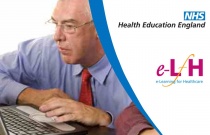Universal Precautions and Cross Infection
Matthew Thomas
Standard precautions should be used for all procedures involving body fluid. They are based on the principle that all body fluids are contaminated. This session explains risk assessment and the precautions needed in all situations.
The Worried Child
Eleanor Leigh
This session describes childhood anxiety and worry and discusses how to react to them.
The Role of Patient and Carer Support Groups in Burns
Evgenia Theodorakopoulou and Monica Fawzy
This session will describe the benefits of patient and carer support groups and explore the challenges that are commonly associated with setting-up and maintaining such groups.
Safe Use of Injectable Medicines (Part 1)
Gillian Cavell
0.50 Hours
Intravenous therapy, known also as IV therapy, refers to the application of liquid medication directly into the veins of a patient. This session explores the health and safety aspects of this procedure, the different technical approaches and equipment involved, along with the steps entailed and the associated risks.
Practical Approaches to Transition
Janet McDonagh, Anita Morgan and Marcelle Sousa
This session considers the practical aspects of timing and planning of transition and transfer for young people with long term conditions and/or disabilities.
Body Shape And Body Image In Adolescence
Rachel Pryke
0.50 Hours
This session explores the normal variations and trends in body shape during adolescence and the factors that commonly influence it, including genetic, ethnic and lifestyle factors. It explains how growth is monitored and explores the common barriers that health professionals may encounter when assessing body shape. This session....
Psychological Therapies for Common Mental Health Problems
Liz England
This session considers some of the psychological therapies that are available for adults and why they should be proposed to patients with common mental health problems. It recommends which therapies are appropriate for which conditions and suggests what you can achieve during a 10 minute consultation.
Safeguarding Children - Surveillance and Health Promotion
Mary Kiddy
0.50 Hours
This session explores the transition from early years to school entry at Reception. It will focus on the universal health assessment and health promotion components that are available to all primary school children as part of the Healthy School Child programme (HSC) 5-12 years.
Safeguarding Children - Injury Prevention, Safety and Medication in School
Jane Levers
0.50 Hours
This session will focus on injury prevention and safety in children of school age. It will explore road safety, sun exposure, second-hand smoke exposure and Internet and social media safety. It will also consider the safe management of medication in school for children with health needs.
Recognising the Last Months and Days of Life and Verifying Death - Palliative Care
Lynne Kovan
This session offers a framework for recognising patients who are at risk of deterioration and who may die soon (last months of life) and also recognising when death is imminent (last days). The priorities for care of the dying person are discussed and the communication with patients and families needed at these times is explored....
Conducting an Audit and Feedback
The National Institute for Health and Care Excellence (NICE)
0.50 Hours
This session is the second of a two part module about how best to carry out a clinical audit. This second session looks specifically at gathering data, analysis and making and sustaining improvement in the audit process.
Overview and Principles of Screening
Joanne Harcombe
0.50 Hours
This session provides an overview of the principles and practice of screening, clarifying relevant terms and detailing the concept of informed choice.
Care of the Woman Who Has Had Unprotected Sex and Patient Scenarios
Maggie Bartlett
0.50 Hours
This session uses three patient scenarios to explore the issues around the provision of emergency contraception (EC) in primary care.
An Introduction to Using Early Support Materials in Context
Silvana Mengoni
0.50 Hours
This session focuses on key working being implemented in practice as well as how Early Support materials can be used and adapted by families and professionals.
Developmental Journal Visual Impairment: Developmental Principles Part 1
Alison Salt, Naomi Dale and Michelle OReilly
0.50 Hours
This session covers the progress of development, learning and vision and other senses in babies and young children with vision impairment.
Dental and Maxillo-facial Radiography: Session 4
Andrew Day and Amanda Loughlin
0.50 Hours
This session will cover general principles of dental cone beam computed tomography (CBCT). It will describe the various CBCT examinations undertaken in the dental imaging department when CBCT is indicated, including anatomical landmarks and pathology or trauma.
Pattern Electroretinography
Tristan Barber
0.50 Hours
This session covers the underlying physiological changes measured by pattern electroretinography (PERG), clinical indications for performing the test, how it is carried out and the interpretation of a PERG report.
Red Eye Case Study 2
Rosemary Robinson
0.25 Hours
This session works through a scenario concerning a patient with a painful red eye.
Red Eye Case Study 1
Rosemary Robinson
0.25 Hours
This session works through a scenario concerning a patient with a painful red eye.
Assessing Severity of Acute Asthma
Ramin Baghai-Ravary
This session identifies clinical severity indicators in acute asthma.
Rarer Causes of Haemoptysis
Prina Ruparelia
This session will discuss the rarer causes of haemoptysis.
Assessment in End of Life Care
Pam Firth
0.50 Hours
This session introduces assessment and review concepts from a social care perspective. This session was reviewed by Tes Smith and Richard Kitchen and last updated in February 2018.
An Introduction to Essential Techniques
Roger Neighbour
This is the first of two sessions covering the fundamentals of consulting skills. The four categories are: establishing rapport, eliciting information, responding to cues and building concordance. These are skills you are likely to need in all of your consultations. This session was reviewed by Suchita Shah and last updated in F....
Recurrent Chest Infections
Jeannette Kraft
0.75 Hours
The session covers recurrent chest infections in children and includes chest infections which are slow to resolve.
Paediatric Mediastinum: Normal Anatomy and Appearances
Helen Williams
0.50 Hours
This session discusses radiographic anatomy of the normal mediastinum and its compartments containing different structures and why this is useful when interpreting an abnormal image. The silhouette sign and how it is used to localise a mass on chest radiograph (CXR) is explained. Embryology and the variable appearance of the nor....
























